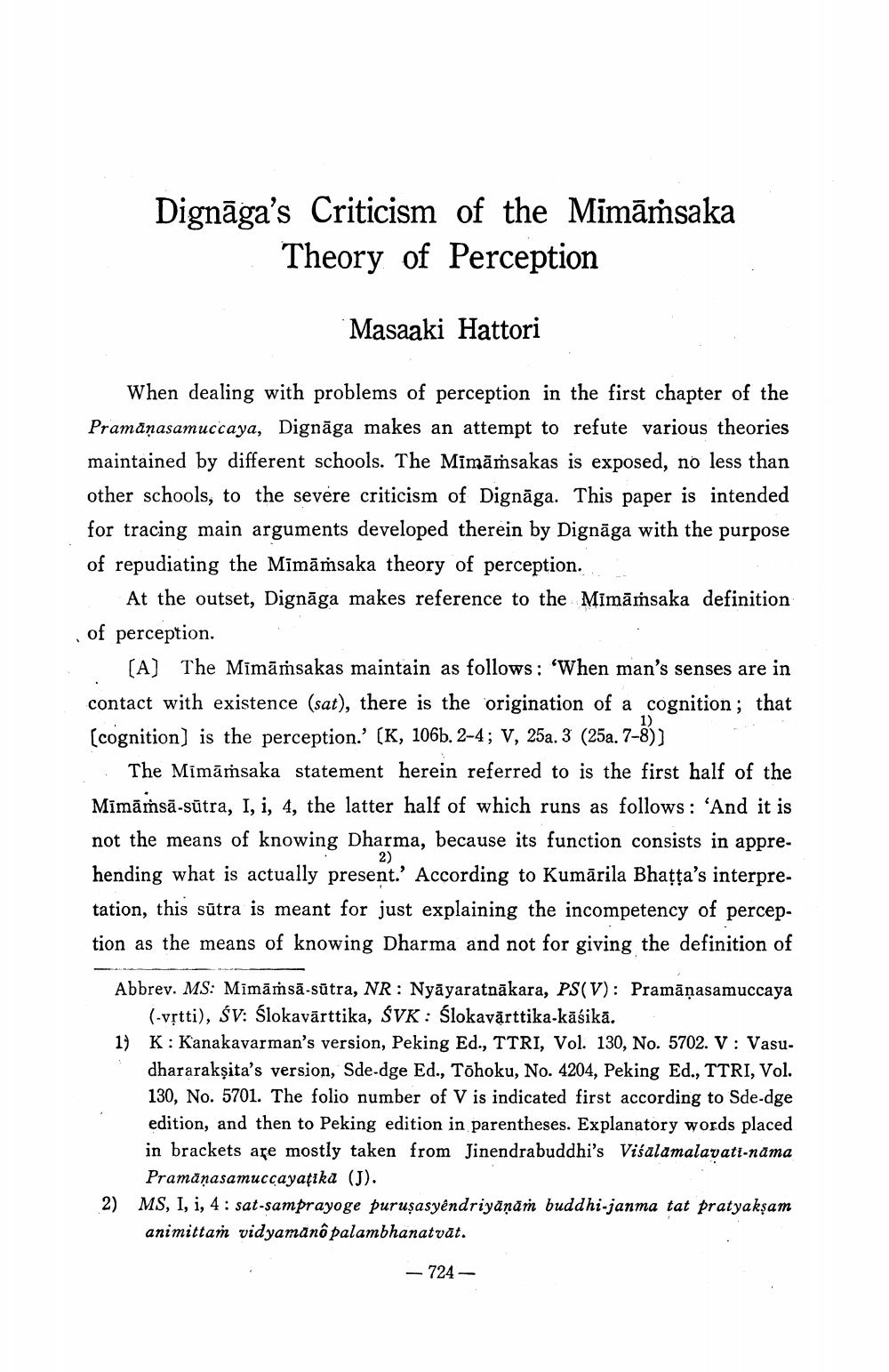________________
Dignaga's Criticism of the Mimāṁsaka Theory of Perception
Masaaki Hattori
When dealing with problems of perception in the first chapter of the Pramanasamuccaya, Dignaga makes an attempt to refute various theories maintained by different schools. The Mimāṁsakas is exposed, no less than other schools, to the severe criticism of Dignaga. This paper is intended for tracing main arguments developed therein by Dignaga with the purpose of repudiating the Mimamsaka theory of perception.
At the outset, Dignaga makes reference to the Mimāmsaka definition of perception.
[A] The Mimāmsakas maintain as follows: 'When man's senses are in contact with existence (sat), there is the origination of a cognition; that [cognition] is the perception.' (K, 106b. 2-4; V, 25a. 3 (25a. 7-8))
The Mimāmsaka statement herein referred to is the first half of the Mīmāṁsā-sūtra, I, i, 4, the latter half of which runs as follows: 'And it is not the means of knowing Dharma, because its function consists in apprehending what is actually present.' According to Kumārila Bhaṭṭa's interpretation, this sūtra is meant for just explaining the incompetency of perception as the means of knowing Dharma and not for giving the definition of
2)
Abbrev. MS: Mīmāṁsā-sūtra, NR: Nyāyaratnākara, PS(V): Pramāņasamuccaya (-vṛtti), SV: Ślokavārttika, ŚVK: Ślokavārttika-kāśikā.
1) K Kanakavarman's version, Peking Ed., TTRI, Vol. 130, No. 5702. V: Vasudhararakṣita's version, Sde-dge Ed., Tohoku, No. 4204, Peking Ed., TTRI, Vol. 130, No. 5701. The folio number of V is indicated first according to Sde-dge edition, and then to Peking edition in parentheses. Explanatory words placed in brackets are mostly taken from Jinendrabuddhi's Visalamalavati-nama Pramanasamuccayatika (J).
2) MS, I, i, 4: sat-samprayoge puruṣasyêndriyāṇām buddhi-janma tat pratyakşam animittam vidyamanô palambhanatvāt.
-724




